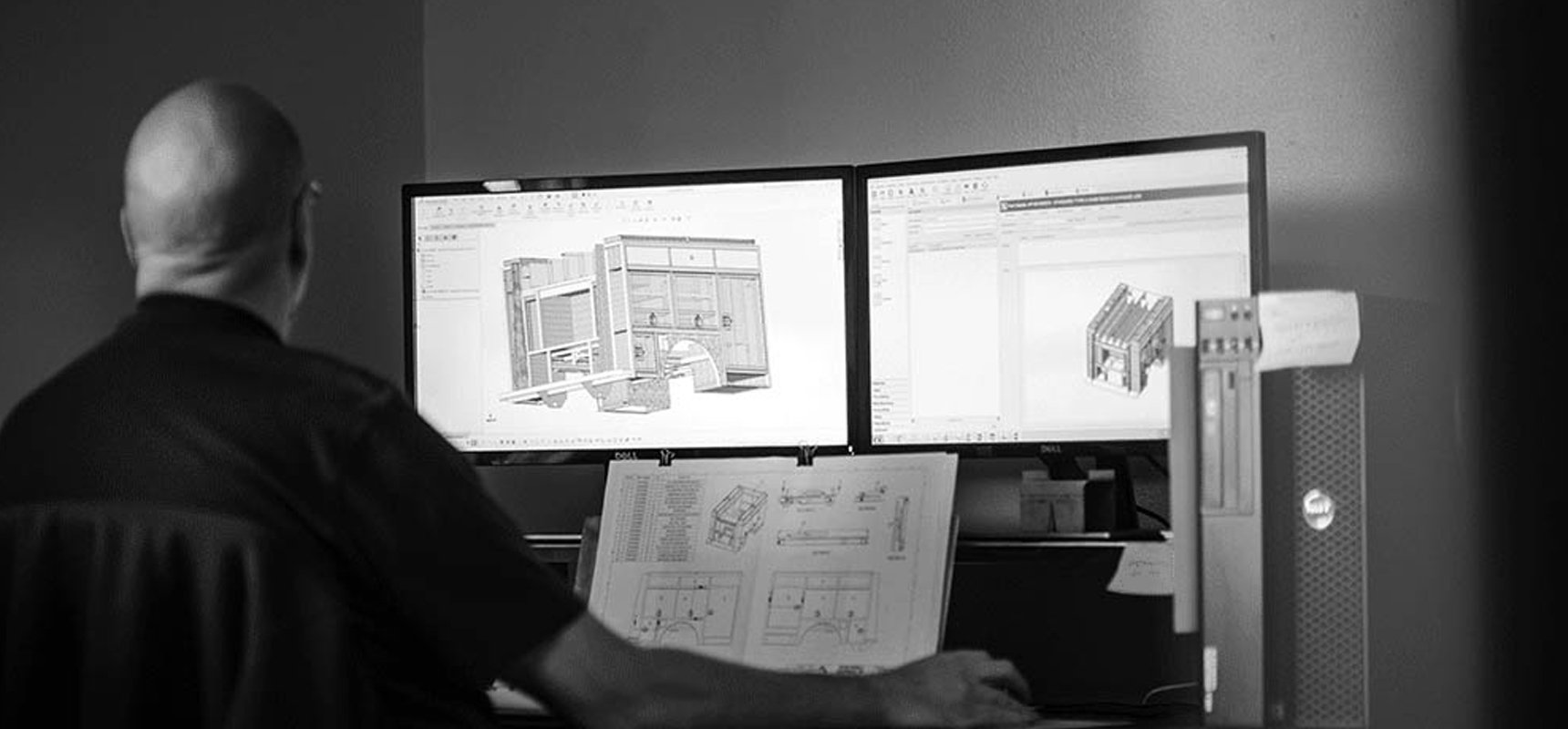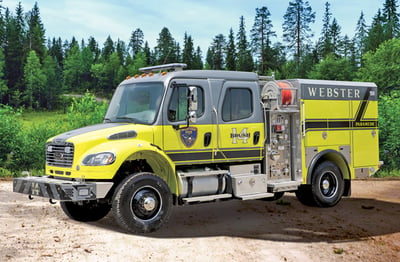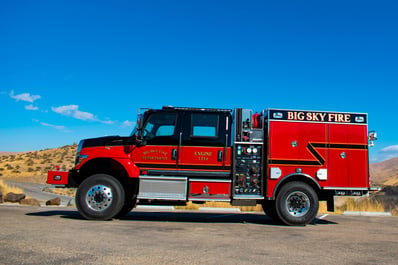 Photo courtesy of Boise Mobile Equipment.
Photo courtesy of Boise Mobile Equipment.
The U.S. Forest Service calls wildland fires “a force of nature which can be nearly as impossible to prevent, and as difficult to control, as hurricanes, tornadoes, and floods.”
Since 2000, an annual average of 70,025 wildfires have burned a yearly average of 7.0 million acres, more than double the average annual acreage burned in the 1990s (Congressional Research Service).
Wildland firefighters face unique challenges compared to their urban and rural counterparts.
- Limited access: wildfires occur in areas that are often difficult to reach.
- Rugged terrain: rough landscape, uneven ground, steep slopes and obstacles hidden by underbrush or smoke can severely hinder mobility.
- Limited water supplies: wildland firefighters must either bring water to the scene by a fire engine, water tender or helicopter or draft it from a nearby water source.
- Challenging communications: in areas without reliable cell service, even backup radios and systems can make it challenging to remain in constant contact.
In this blog, we’ll examine several trends in wildland firefighting technology which are helping to improve the preparedness, effectiveness and safety of wildland firefighters.
1. Wildland Urban Interface Engines

Wildland Urban Interface (WUI) regions are areas where nature meets urban development and human-made structures and infrastructure.
Wildland firefighters who typically relied on a Type 3 wildland or brush fire truck needed a new combination of features and capabilities to manage the multifaceted environment of a WUI.
The result was a merging of Type 1 and Type 3 features to create the Wildland Urban Interface Engine. These unique multipurpose fire apparatuses offer a range of attributes which help firefighters seamlessly shift between interface areas.
- Improved base configuration increases optimal maneuverability, angle of approach and departure, and control on variable terrain.
- Specialized pump configurations offer pumps at 500-1500 GPM and auxiliary pumps for pump and roll operations.
- Increased fire suppression capabilities allow for 500-1000 gallon water capacity and the inclusion of firefighting foam systems.
- Strategic use of space designed to enhance hatch storage for equipment, ground ladder storage as well as add comfortable cab space for 4-5 firefighters.
- Multiple hose capacities and sizes make it possible to react more quickly to changing environmental conditions.
In addition to improving firefighting capabilities in wildland urban interface areas, adding a WUI engine can benefit the community it serves by improving its Insurance Services Office (ISO) score. The Public Protection Classification (PPC) or ISO score rating is used as a standard for setting residential and commercial property insurance premiums.
WUI engines are uniquely designed and equipped to fight fires in interface areas; adding such an apparatus can contribute to a lower ISO score and potentially reduce local insurance costs.
2. Automatic Vehicle Locators
Photo courtesy of Boise Mobile Equipment.
Automatic vehicle locators (AVLs) are devices designed to monitor the position and movement of fire trucks in real-time. AVL systems can combine VHF, cellular and satellite technologies and satellite-driven global positioning system (GPS) to provide the most reliable location service in remote areas.
Adding AVLs to firefighting vehicles improves operational awareness and streamlines vehicle and resource deployment decision-making. AVLs also increase firefighter safety by allowing commanders to “see” where vehicles are even when they can’t see each other due to smoke, darkness or other vision-impairing conditions.
3. Improved Occupant Safety Features
Designs for modern wildland and WUI fire apparatus include features which protect firefighters inside the cab. The PS6® seat design was the first to feature built-in side roll protection, a safety element available exclusively from Pierce. The innovative seat also features a hands-free SCBA holder, dual retractors for double-length seatbelts, a 7.5-degree angle of recline, lumbar adjustment, air suspension and auto-center position.
With rough and unpredictable terrain in mind, Pierce also offers the RollTek Side Roll Protection System. This unique system uses a sensor to detect an unrecoverable rollover. Upon detection, a suspension system pulls the seat to its lowest and safest position, a seatbelt pretensioner secures the passenger and a side airbag is deployed to cushion the passenger’s head and neck.
Lastly, Pierce’s Roll-Over Protection System is an aid to increase survival space for occupants of the cab in the event of a roll over or if objects hit the top of the cab. The chassis in-cab reinforcement cage is designed to exceed NFPA cab strength requirements, undergoes rigorous testing and works in conjunction with the RollTek System to ensure safety for all cab occupants.
Learn more about Pierce 360° Protection From Every AngleTM safety features!
Wildland firefighting is constantly evolving. Longer fire seasons, more intense fire incidents and expanding wildland urban interface areas are driving unprecedented demand for technologies to fight wildland fires with greater effectiveness, efficiency and safety.
Pierce understands the needs of modern wildland firefighters and remains committed to providing the most advanced vehicles, tools and technologies.
To learn more about Pierce Manufacturing’s commitment to wildland firefighting and available apparatus options, contact your local dealer.
What other wildland technologies are you seeing? We’d love to hear your thoughts in the comments.
